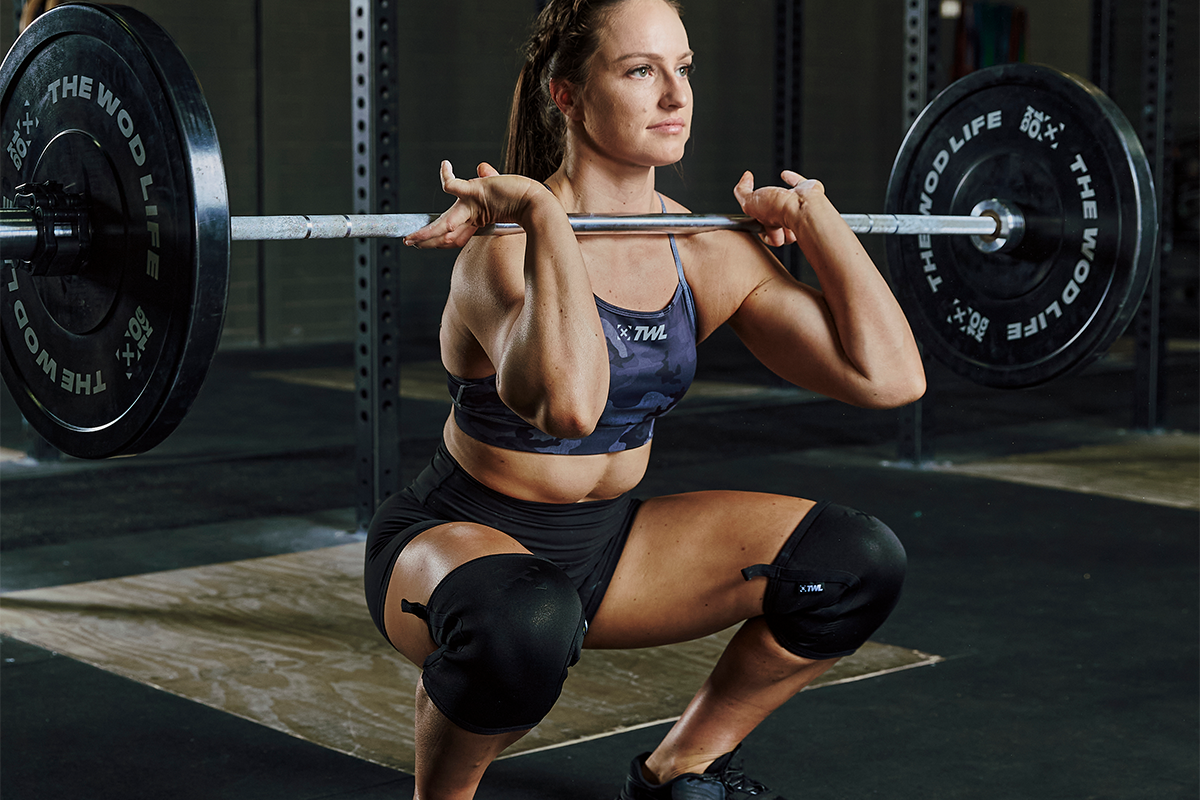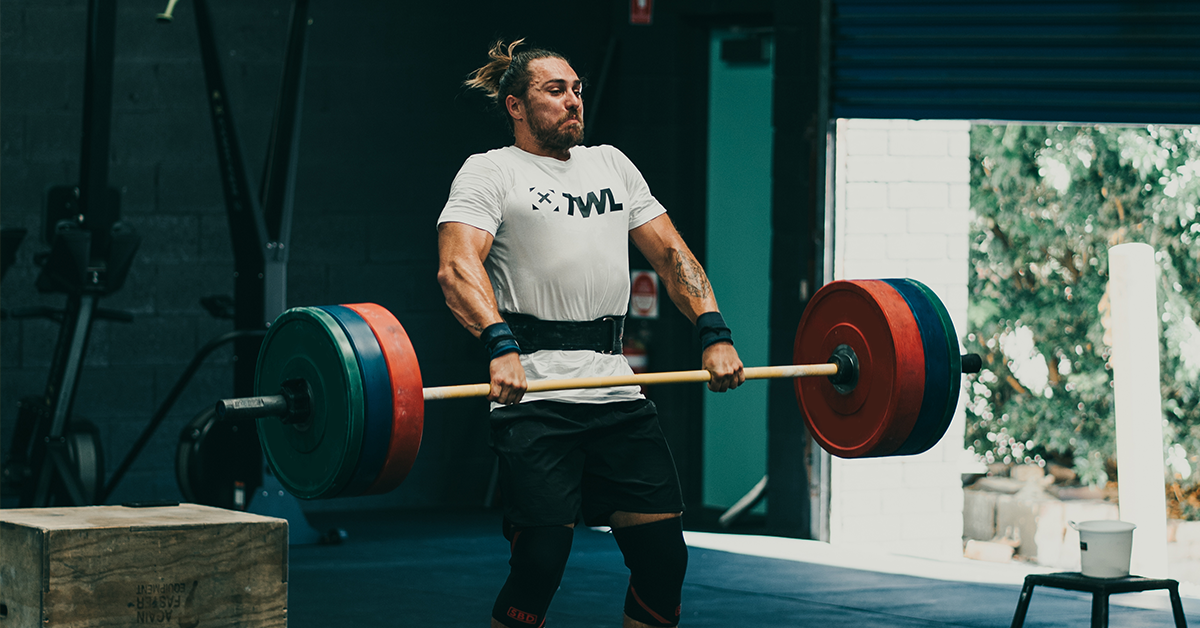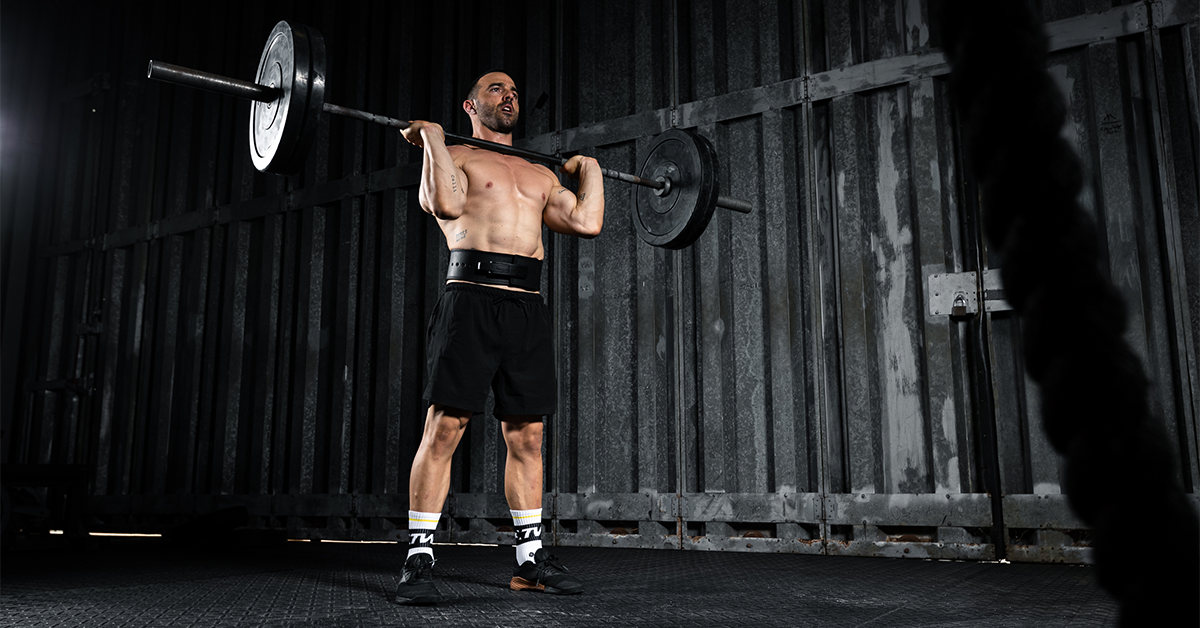You’ve probably done plenty of deadlifts at the gym. And every time you clean, you do a deadlift perhaps without realizing it. But did you know that not all deadlifts are the same? In the blog, you’ll learn about the clean deadlift vs deadlift, how they’re alike and different, and a few tips for mastering each.
Clean Deadlift vs Deadlift: Aren’t They Pretty Much the Same?
Well… kind of and not really. We’ll explain.
The goal is the same: Pick the barbell up. And many aspects of the two lifts are the same (or very similar). For instance, both movements require you to fold at the hips and knees to some degree and then bend over to grip the barbell.
However, the key difference between the clean deadlift vs deadlift lies in the angles of your body.
Let’s start with the deadlift. When you set up on the bar, you soften your knees, hinge at the hips, and meet the barbell with your hands. In this position, your torso is probably roughly parallel to the floor. From here, you engage your core, push through your feet, and stand up with the barbell.
Now, let’s look at the clean deadlift. Setting up for a clean is different from setting up for your standard deadlift. The reason for this is that you’re required to move the barbell a greater distance. In a traditional deadlift, you’re standing up with it. In a clean, you’re standing up with it and hoisting it onto your shoulders. This requires more strength, power, and explosiveness.
Where does this extra strength, power, and explosiveness come from? Your hips and glutes! So, when you prepare for a clean, you bend at the hips and knees to meet the barbell, similar to how you do in a standard deadlift. However, from there, you lower into a deeper squat. Some athletes position their hips at parallel, while others squat even deeper than this. In other words, in a clean deadlift, your hips are going to be lower than in a deadlift.
Let’s look at clean deadlift vs deadlift side by side. We’re borrowing this picture from CrossFit Austin. It perfectly captures the perhaps subtle but nonetheless important differences between the two.
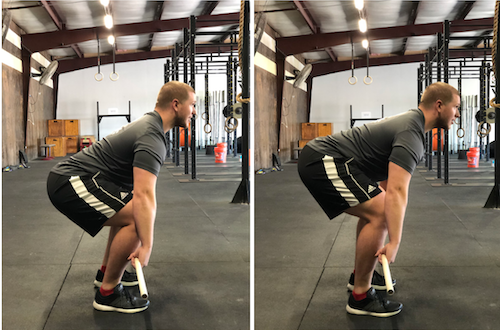
Note that in the left picture — which depicts the clean deadlift — the athlete’s hips are lower, the angle made by his hips and torso is narrower, and he’s in a slightly deeper squat.
Important note: The exact positioning of both deadlifts will vary from person to person largely due to their anthropometry. This refers to the measurements and proportions of the body. For instance, an athlete with very long femurs (the thigh bone) might look slightly different performing a deadlift compared to someone with shorter femurs.
But Why Does the Clean Deadlift Have to Be Different?
What would happen if you set up for a standard deadlift and then tried to perform a clean? Well, if the weight was light enough, you might be able to get away with it.
However, as we mentioned earlier, the clean deadlift is going to make it far easier for you to complete the lift. Because you’re in a deeper squat, you’re better able to load your quads and glutes. This is the reason why, during the second and third pulls (everything that happens after you pass your knees), you’re able to “explode,” lift the barbell higher, and get under it.
If you’re still having a hard time processing this, let’s look at an extreme example. Imagine performing a deadlift with straight legs (also called a stiff-leg deadlift). Now, imagine trying to clean like that. Pretty challenging, right? That’s why a clean deadlift involves a deeper bend.
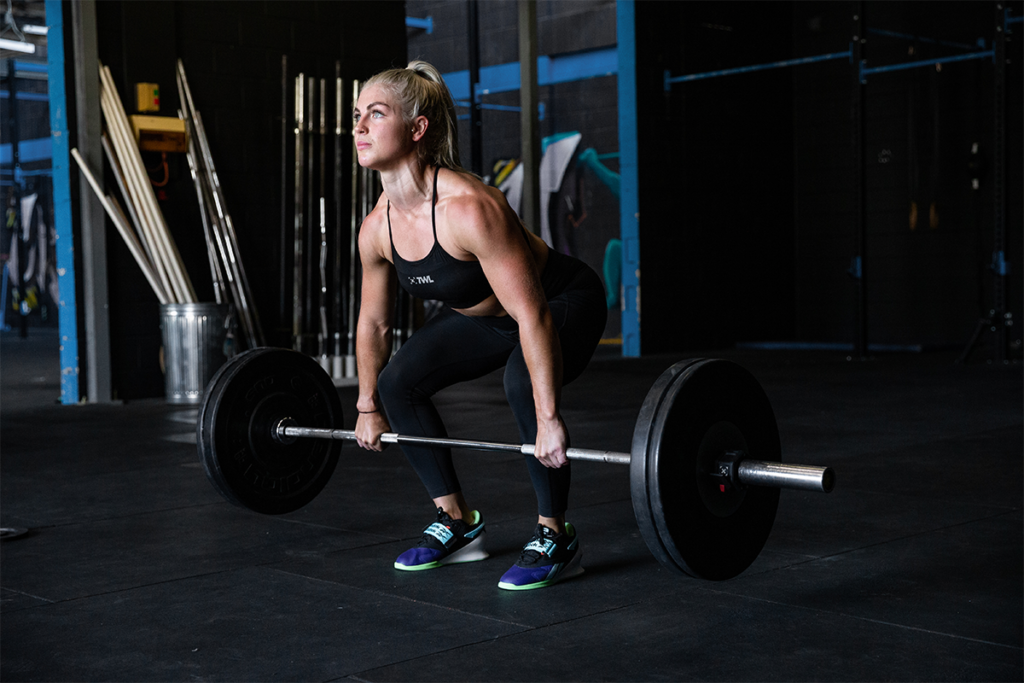
3 Tips for Perfecting Your Clean Deadlift and Deadlift
We’d like to leave you with some simple but effective deadlift tips for improving your form.
1. Keep the Barbell Close
Do you know what happens when the barbell starts to drift away from your body? It feels 10 times heavier! Think of tracing your body with the bar. That’ll help you stay in the right position.
2. Keep Your Neck Neutral
A lot of athletes make the mistake of looking in the wrong place during their deadlifts. But trying to look too far forward or upward can throw the whole lift out of whack. It can be pretty uncomfortable, too.
At the top of your traditional deadlift, try looking downward and in front of you. At the bottom of the movement, you might be looking straight down. For the clean deadlift, keep your eyes straight ahead throughout the duration of the movement.
3. Use Your Legs!
Some athletes think that the deadlift is a “back exercise,” but it’s actually a compound movement. Both deadlifts rely on just about every muscle group in your body, especially your lower body. Think of pushing your feet through the floor to really leverage your legs, hips, and glutes. These are some of the strongest muscles in your body. Use them!
Don’t forget that if your focus is on building strength, using straps for deadlifting might be a good idea.
Shop Now
Weightlifting straps take some of the pressure off your grip so that you can lift heavier. Importantly, though, we only recommend these for the deadlift itself. You can use them for clean deadlifts, but avoid using them for the entire Olympic lift. This is incredibly tricky to do and if you’re not careful, it can result in injury. If you want to perform the full clean lift, remove your straps first!
Straps are a smart idea when your body can handle more weight but your hands can’t. If your grip is the limiting factor, strap up. Otherwise, go without.
Now that you know more about the clean deadlift vs deadlift, you’re ready to perfect your form and build some serious strength. Get to work!



